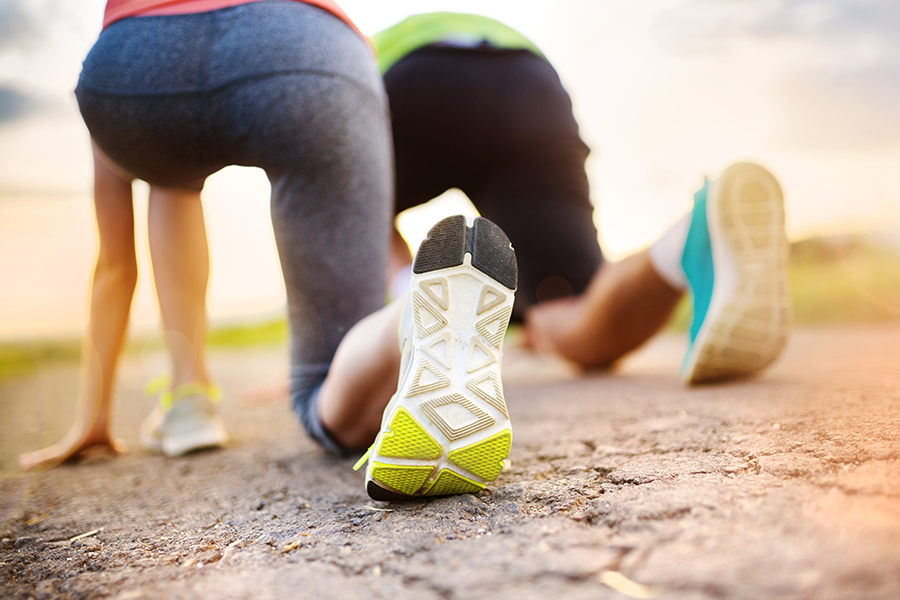Athlete’s Foot Myths and Facts
Feet–we all have them, and we all know the importance of them. We get from one location to another with them, but they are also very vulnerable to germs. When your feet sweat in shoes all day or are exposed to locker room floors, you can develop a condition that is known as “Athlete’s Foot“. There are many myths about this condition, but just how many of them are actually true?
Myth 1: Athlete’s Foot is something only athlete’s get
Due to its namesake of having “Athlete” in it, most tend to believe this is the case. Truth is, anyone from women to even kids can acquire the irking infection. The fungus frequents locations associated with Athlete’s such as shower rooms and locker rooms, giving it its said name. Any average Joe or Jane can catch it if exposed just like their favorite sports stars.
Myth 2: Showering every day eliminates chances of Athlete’s Foot
If you step barefoot into a locker room or the shower at a pool center, you can still catch it. If you have Athlete’s Foot, no amount of showering after will clear it up. Keeping your feet dry and clean will eliminate the chances of the fungus returning.
Myth 3: If you have good hygiene, you can’t get it
The fungus “Tinea” will infect you regardless if you take a shower every day or not. The cleanest person can get it just as quick as the dirtiest. Continuing to dry your feet thoroughly helps to prevent the disease.
Myth 4: Cotton socks will keep Athlete’s Foot away.
Moist/wet areas attract the fungus. And, due to the thickness of cotton, the moisture caused by the fibers could invite the fungus. Socks made of fibers are better. Therefore, they absorb and evaporate the natural moisture of the foot.
Myth 5: Athlete’s Foot and Jock Itch are not the same
Tinea can leave the same scaly patches in the skin of the groin as it does the foot. The name derives from the genital supporter for athletes dubbed the “Jockstrap.”
Myth 6: Athlete’s Foot is only a foot infection
The name of the infection does have the word “Foot” in it, but other than Jock Itch, it can indeed spread to other body parts if it were to come in contact. As previously stated, other items such as blankets and clothing can spread the infection.
Myth 7: If your feet are covered in shoes and socks, you can’t catch the infection
If you wear shoes and socks that are wet, the infection can appear. Tinea flourishes in dark, moist areas. Therefore, increasing the chances of infection. Your feet are indeed safer if socks or shoes are worn; just dry those socks and shoes first.
Myth 8: Walking barefoot in areas infected is the only way to get Athlete’s Foot
Partly true, however, if you walk barefoot in infected areas, you can acquire Athlete’s Foot. But, this isn’t the only way you get this disease. In fact, if you share items–such as socks and towels–with another person who has the infection, you increase your chances of getting infected.
Myth 9: Peeling and cracked skin are the only signs of Athlete’s Foot
Athlete’s foot varies from person to person. Some don’t show the common signs of the infection. Rather, just possess dry skin and redness instead. If you are unsure if you do or do not have athlete’s foot, consult your local doctor or podiatrist just to make sure.
Myth 10: Athletes foot will go away on its own
This is extremely inaccurate and will actually make the infection worsen. In fact, this could potentially cause the athlete’s foot to become more dangerous to your feet. Not to mention it will make them extremely uncomfortable. Medication for fungi is the best way to treat and relieve your infected areas.
Myth 11: Once treated, it’s gone for good
Sadly, this isn’t the case. It’s crucial to better care for your feet after the infection is cleared up. And, it may return if you don’t properly care for your feet after.
Myth 12: Once cleared up, stop taking the medication is okay
Unlike a common cold, you should continue to take the medication prescribed. Therefore, it’s ideal to continue it as long as a doctor recommends. Even after symptoms have disappeared to prevent the infection from returning.
If you are experiencing foot or ankle problems, our world-renowned specialist, Dr. Alan MacGill is here to help. Call us at 954-9069272 for more information or to schedule a consultation today.

